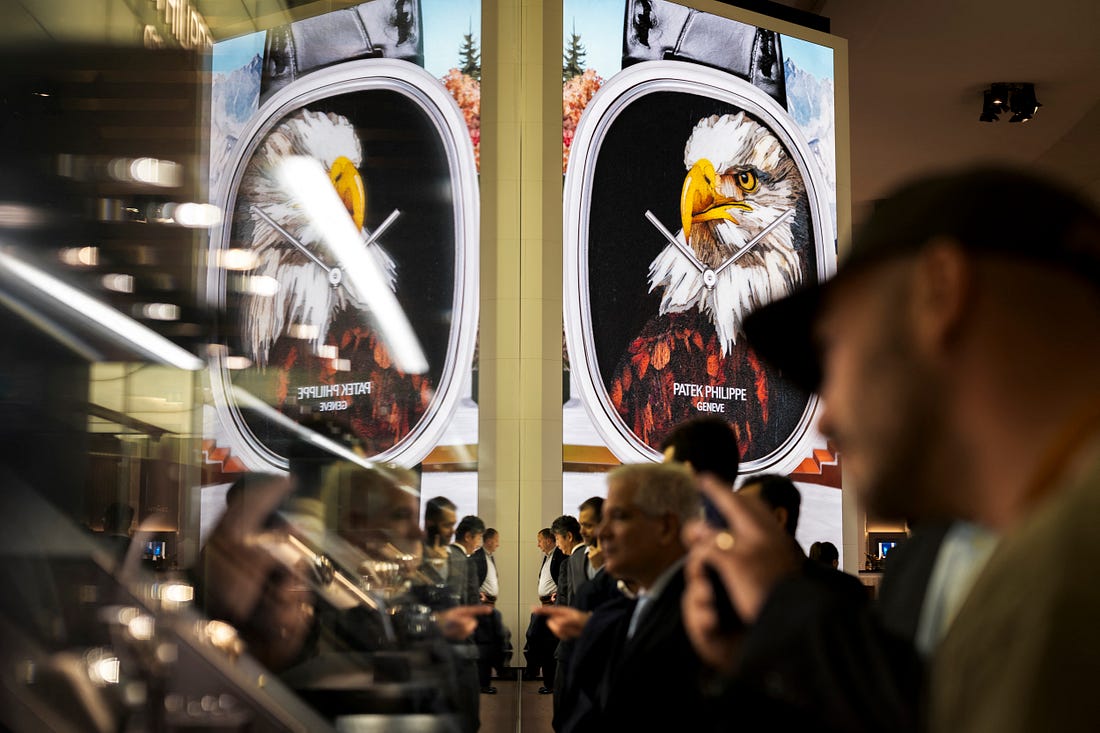|
 |
AI and the Problem of the Last 10 Percent
How AI will completely reorder the media ecosystem. And make it worse.
1. Watch Talk
Over the last few weeks I’ve had some people ask me how I use AI in my work and I want to share my answer with you, because my use case is illustrative of both the possibilities and limitations of AI as a tool.
The short version is that I can’t use AI in my work, because AI is fundamentally unsuited to jobs that require high levels of trust.
The long version is going to require us to do some Watch Talk. So, you know, you’ve been warned ¯\_(ツ)_/¯
Supply chains in watch production have undergone a revolution.¹
Once upon a time, the only way to get high-quality machined parts for watches was to get them from Switzerland. That’s where all the knowledge base was and—just as importantly—all the technology. The actual machines that did high-quality milling, beveling, and polishing were mostly in Switzerland.
Slowly, that knowledge and technology base diffused into Asia. First to Japan, then to Indonesia and finally China. Today most mass-produced watches incorporate some components that are originally manufactured in China. Even if the watch is certified as “Swiss Made.” And most watch movements—even if they are considered to be manufactured “in house”—rely on components that are manufactured in China but then refined or modified elsewhere.
Why?
Because manufacturing in China has gotten really good. You can pick up a Chinese-made watch like a San Martin for $300 and the quality will astound you. The beveling and polishing is well executed. The tolerances are surprisingly tight. Overall, the fit and finish will be comparable to an $800 “Swiss” watch. And that’s because a lot of those “Swiss Made” watches are sourcing high percentages of their parts from the same factories that supply parts to San Martin.
The reality is that Asian parts manufacturers are able to get very close to the quality of Swiss manufacturers. Maybe 90 percent of the way there. And they can do it at a fraction of the cost.
The problem is that last 10 percent.
Here we have to talk about Rolex.
I am not a Rolex snob. Rolexes are not the “best” watches by any measure. But I do appreciate Rolex for what it is: The company makes mass-produced watches with exceedingly high levels of quality control. What I’m getting at here is that if you put a Rolex under a microscope against a largely hand-finished watch from A. Lange, the Lange blows the Rollie out of the water. Watch this video if you want to get a sense of the difference.

But here’s the rub: Lange is producing 5,000 watches a years. Rolex is producing a million watches.
No one is able to make a million watches a year with anything close to Rolex’s level of quality.
How do they do it? Rolex uses a fully integrated manufacturing process. By which I don’t just mean that Rolex makes all of their parts themselves, in Switzerland. They make many of the machines they use to make their parts themselves. Hell, Rolex even makes the raw steel they use in cases themselves.²
All of which is to say that a Rolex Submariner is not the best dive watch you can buy at the price point. Not by a long shot. But the manufacturing process Rolex uses to produce the number of Submariners they make per year, at that quality, is un-forking-believable. Everyone in the watch world is in awe of Rolex as an operation.
Why?
Because no one can replicate that last 10 percent of Rolex quality at scale.
And this is why the general rule in watchmaking is that prices curve upwards at the very top of the quality scale. You can get a good watch for $300. You can get a great watch for $1,000. But if you want that final 10 percent of quality improvements, the cost structure gets pretty steep.
2. AI and Me
AI is like Chinese machine production. It can create good outputs at an incredibly cheap price (measuring here in the cost of human time).³
Which means that AI—as it exists today—is a useful tool, but only for tasks that have a high tolerance for errors.
Let me give you an example:...
